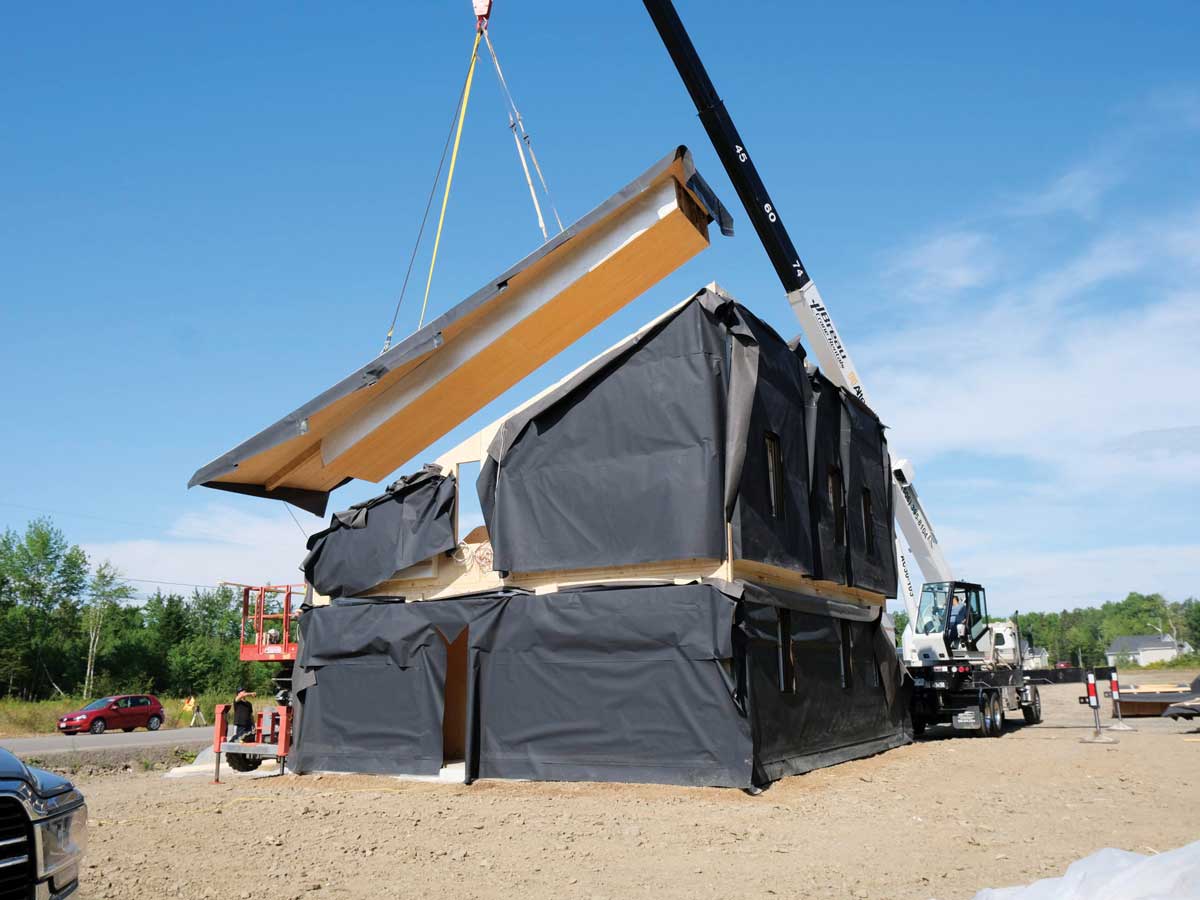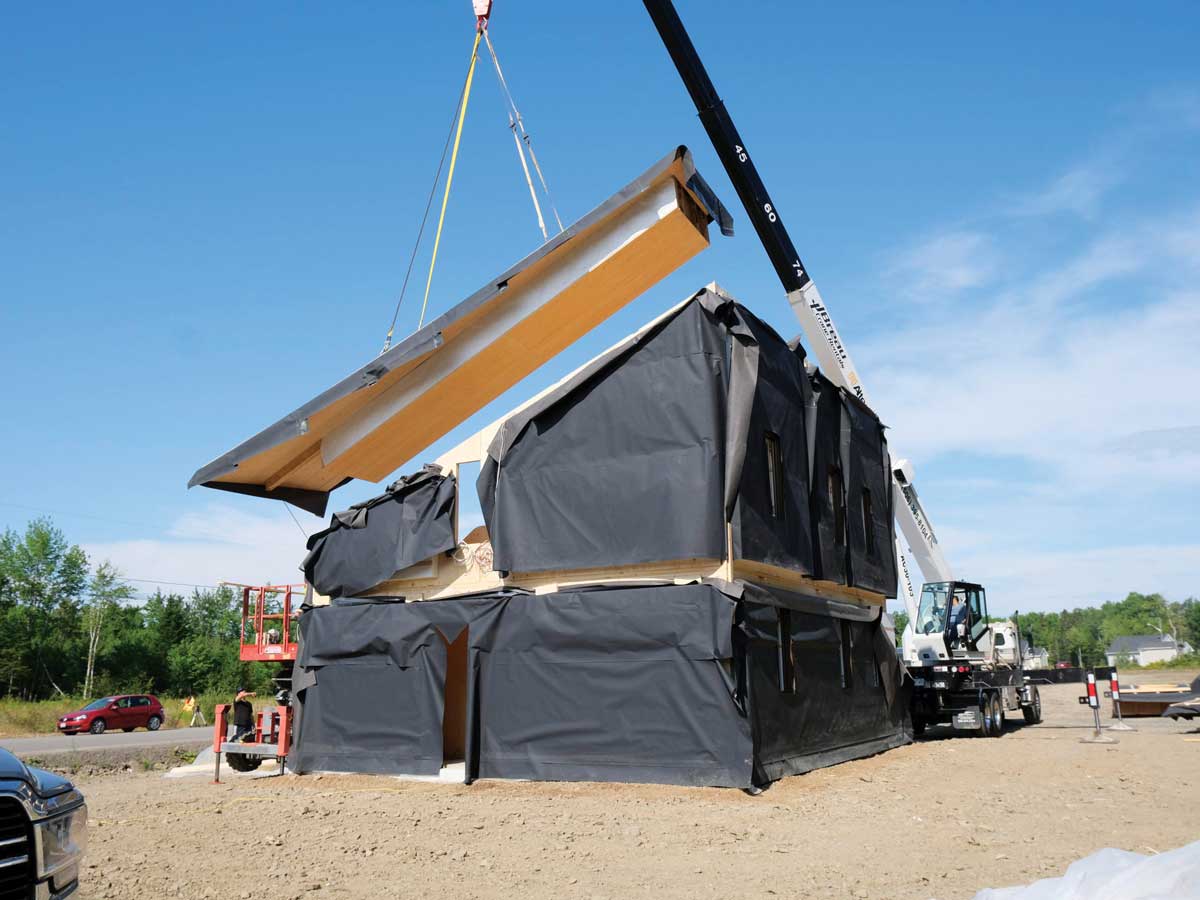
Why mass timber could be the future of construction
 Element5 manufactured Cardinal House, a prototype of a prefabricated mass timber home, designed to meet the needs of Indigenous communities living on reserve (Photograph courtesy of Element5 Co/Mark Hemmings)
Element5 manufactured Cardinal House, a prototype of a prefabricated mass timber home, designed to meet the needs of Indigenous communities living on reserve (Photograph courtesy of Element5 Co/Mark Hemmings)
Venture into the downtown area of any major North American city and you’ll be greeted by clusters of concrete and steel rising from the ground like sci-fi forests. But recent years have seen a renaissance in building materials that come from actual forests. A growing cohort of foresters, academic institutions and manufacturers is pushing the construction industry toward a more sustainable option: prefabricated mass timber.
“More and more companies are recognizing that it’s faster to build this way, it’s cheaper to build this way,” says Patrick Chouinard, founder of Ontario-based mass timber manufacturer Element5.
Mass timber refers to engineered-wood products like posts, beams and large structural panels that are made by forming wood into layers, often using glue or nails. (These components are typically not exposed to the elements.) The technology is more widespread in Europe, where cross-laminated timber (CLT)—made by gluing together layers of kiln-dried lumber, with each layer perpendicular to the next—was invented in the 1990s. Structurally comparable to concrete, CLT spurred a revolution that’s making its way to North America, where mass timber manufacturing has grown tenfold since 2010.
In 2017, the Canadian government pledged $39.8 million to encourage the use of timber in non-traditional construction projects, such as tall buildings. “We can help reduce greenhouse gas emissions while creating jobs for Canadians and opportunities for Canadian businesses,” said Jim Carr, then the Minister of Natural Resources.
 A worker removes excess glue from the edge of a rib panel at a plant in Ripon, Que. Glue-laminated timber; wood panels can be joined together by adhesives or traditional mechanical fasteners, like these structural lifting screws; mainly used for floors and roofs, NLT can be used in place of concrete slabs and steel decking in commercial buildings (Photography by Guillaume Simoneau)
A worker removes excess glue from the edge of a rib panel at a plant in Ripon, Que. Glue-laminated timber; wood panels can be joined together by adhesives or traditional mechanical fasteners, like these structural lifting screws; mainly used for floors and roofs, NLT can be used in place of concrete slabs and steel decking in commercial buildings (Photography by Guillaume Simoneau)
There are business challenges, too. “Very few architects and engineers know how to design and engineer buildings in mass timber,” Chouinard says. “We quickly realized that in order to be successful we had to provide a host of professional services to guide projects from design to fruition.”
With the help of investors, including Kensington Capital’s Tom Kennedy and Frank Dottori, Element5 is also gearing up to open a 137,000-square-foot, nearly $50-million plant in St. Thomas, Ont., by the end of the year.
For Anne Koven, the executive director of the Mass Timber Institute at the University of Toronto, the new plant is proof of mass timber’s potential. More than a third of Canada’s land mass is forests, and much of the land available for the forestry industry is untapped: Last year, Ontario cut down less than half the timber volume that foresters calculated could be sustainably harvested.
“In forestry we’re all about sustainability,” Koven says, “and we like to see every tree that we harvest be optimized. We want to obtain the highest dollar value for every tree we harvest.” Mass timber, she says, provides a lot of value for the wood that is cut. And unlike concrete, which accounts for eight per cent of global CO2 emissions, a mass timber product stores carbon for as long as the wood lasts.
With the global population expected to grow from 7.7 billion to 9.7 billion people in the next 30 years, proponents of mass timber see it the sustainable solution to the housing crisis. Half of the world’s population lives in urban centres. “We can’t continue to build the way we’ve been building, because the concrete and steel industries are spewing carbon dioxide into the atmosphere that we’re getting to the tipping point,” says Chouinard. “Wood is really the only alternative building material that helps to combat climate change.”
GOING GREEN
Learn more about CPA Canada’s commitment to understanding climate change as a business issue, including its response to the interim report of the Expert Panel on Sustainable finance and its involvement in the Prince of Wales’ Accounting for Sustainability (A4S) initiative.